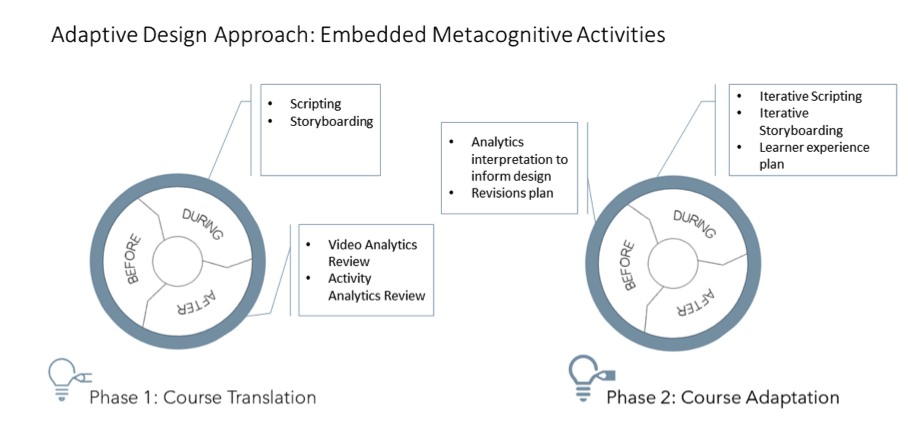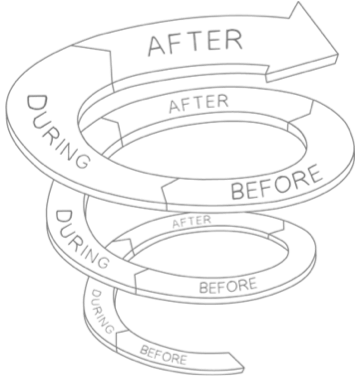by Steven Fleisher at CSU Channel Islands
Although challenging at times, providing for positive affective experiences are necessary for student metacognitive and self-regulated learning. In a classroom, caring environments are established when teachers not only provide structure, but also attune to the needs and concerns of their students. As such, effective teachers establish those environments of safety and trust, as opposed to merely environments of compliance (Fleisher, 2006). When trust is experienced, learning is facilitated through the mechanisms of autonomy support as students discover how the academic information best suits their needs. In other words, students are supported in moving toward greater intrinsic (as opposed to extrinsic) motivation and self-regulation, and ultimately enhanced learning and success (Deci & Ryan, 2002; Pintrich, 2003).
Autonomy and Self-Regulation
In an academic context, autonomy refers to students knowing their choices and alternatives and self-initiating their efforts in relation to those alternatives. For Deci and Ryan (1985, 2002), a strong sense of autonomy within a particular academic task would be synonymous with being intrinsically motivated and, thus, intrinsically self-regulated. On the other hand, a low sense of autonomy within a particular academic context would be synonymous with being extrinsically motivated and self-regulated. Students with a low sense of autonomy might say, “You just want us to do what you want, it’s never about us,” while students with a strong sense of autonomy might say, “We can see how this information may be useful someday.” The non-autonomous students feel controlled, whereas the autonomous students know they are in charge of their choices and efforts.
Even more relevant to the classroom, Pintrich (2003) reported that the more intrinsically motivated students have mastery goal-orientations (a focus on effort and effective learning strategy use) as opposed to primarily performance goal-orientations (actually a focus on defending one’s ability). These two positions are best understood under conditions of failure. Performance-orientated students see failure as pointing out their innate inabilities, whereas mastery-oriented students see failure as an opportunity to reevaluate and reapply their efforts and strategies as they build their abilities. Thus, in the long run, mastery-oriented students end up “performing” the best academically.
The extrinsically motivated students perceive that the teacher is in charge, and not themselves, as to whether or not they are rewarded for their work. This extrinsic orientation may facilitate performance, however, it can backfire. These students can become unwilling to put forth a full effort for fear of failure or judgment. These students feel a compulsion for performance, which can result in a refusal to try to meet goals. They may come to prefer unchallenging courses, fail, or drop out entirely. On the other hand, students with intrinsic goal-orientations realize that they are in charge of their reasons for acting. Metacognitively, they are aware of their alternatives and strategies and self-regulate accordingly as they apply the necessary effort toward their learning tasks. These students would sense that the classroom provided an environment for exploring the subject matter in relevant and meaningful ways and they would identify how and where to best apply their learning efforts.
Strategies for the Classroom
As with autonomy (minimum to maximum), motivation and self-regulation exist on a continuum (extrinsic to intrinsic), as opposed to existing at one end or the other. Here are a couple of instructional strategies that I have found that support students in their movement toward greater autonomy and intrinsic motivation and self-regulation.
Knowledge surveys, for example, offer a course tool for organizing content learning and assessing student intellectual development (Nuhfer & Knipp, 2003). These surveys consist of questions that represent the breadth and depth of the course, including the main concepts, the related content information, and the different levels of reasoning to be practiced and assessed. I have found that using knowledge surveys to disclose to student where a course is going and why helps them take charge of their learning. This type of transparency helps students discover ways in which their learning efforts are effective.
Cooperative learning strategies (Millis & Cottell, 1998) provide an ideal counterpart to knowledge surveys. Cooperative learning (for instance, working in groups or teaching your neighbor) offers both positive learning and positive affective experiences. These learning experiences, between students and between teachers and students support the development of autonomy, as well as intrinsic motivation and self-regulation. For example, when students work together effectively in applications of course content, they come to see through one another’s perspectives the relevance of the material, while gaining competency as well as insights into how to gain that competency. When students are aware, by way of the knowledge surveys, of the course content and levels of reasoning required, and when these competencies and related learning strategies are practiced, reflected upon, and attained, learning and metacognitive learning are engaged.
References
Deci, E. L. & Ryan, R. M. (1985). Intrinsic motivation and self-determination in human behavior. New York: Plenum Press.
Deci, E. L. & Ryan, R. M. (2002). Handbook of self-determination research. Rochester, NY: The University of Rochester Press.
Fleisher, S. C. (2006). Intrinsic self-regulation in the classroom. Academic Exchange Quarterly, 10(4), 199-204.
Millis, B. J. & Cottell, P. G. (1998). Cooperative learning for higher education faculty. American Council on Education: Oryx Press.
Nuhfer, E. & Knipp, D. (2003). The knowledge survey: A tool for all reasons. To Improve the Academy, 21, 59-78.
Pintrich, P. R. (2003). Motivation and classroom learning. In W. M. Reynolds & G. E. Miller (Eds.), Handbook of psychology: Educational psychology, Volume 7. Hoboken, NJ: John Wiley & Sons.

